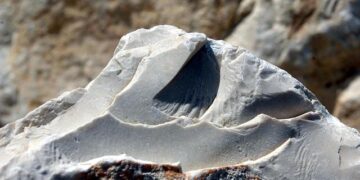The Mars Exploration Program Analysis Group (MEPAG) recently hosted a series of virtual workshops aimed at advancing the search for life beyond Earth. Organized under the Science Analysis Group initiative, these online gatherings brought together leading scientists and astrobiology experts to discuss the latest research, share innovative methodologies, and chart future directions in the quest to detect signs of past or present life on Mars. The workshops, featured on astrobiology.com, underscore the growing collaborative efforts within the scientific community to unlock Mars’ biological mysteries and refine mission strategies for upcoming exploration endeavors.
MEPAG Science Community Gathers Virtually to Advance Life Detection Strategies
This month, leading researchers and experts in astrobiology convened online to review and refine innovative approaches for detecting life beyond Earth. The workshops emphasized collaborative strategy development, fostering interdisciplinary discussions that bridged planetary science, chemistry, and biology to sharpen the focus of upcoming Mars missions. Key topics included enhancing biosignature identification techniques and integrating remote sensing data with in-situ analyses to maximize detection capabilities.
Participants highlighted several priority areas for immediate research efforts and technology development, outlined in the table below, which will guide future mission designs and laboratory experiments. The collective insights from these virtual sessions are expected to accelerate progress toward one of humanity’s most profound quests: answering whether life exists elsewhere in our solar system.
| Priority Area | Focus |
|---|---|
| Advanced Biosignatures | Novel molecular markers for past or present life |
| Instrument Integration | Optimizing payload synergy for rover missions |
| Sample Analysis | Developing techniques for definitive life detection |
| Environmental Context | Understanding habitability through geochemical mapping |
Experts Discuss Key Findings and Challenges in the Search for Extraterrestrial Life
Leading researchers at the virtual forums unveiled the latest breakthroughs in astrobiology, emphasizing the intricacies of detecting biosignatures beyond Earth. They highlighted that while technological advancements in telescopes and remote sensing have significantly improved data collection, interpreting those signals presents ongoing challenges. Among the key points discussed were:
- Distinguishing between abiotic and biotic signatures, especially in atmospheres rich in fluctuating gases.
- Understanding planetary environments that could sustain life forms unlike those known on Earth.
- Limitations in current sensor sensitivity and the need for cross-disciplinary approaches in data validation.
Panel experts also identified strategic priorities for upcoming missions, underscoring the importance of synergy between robotic exploration and ground-based observations. A comparative analysis table was presented to assess mission capabilities and challenges:
| Mission | Primary Objective | Key Challenge | Projected Launch |
|---|---|---|---|
| Europa Clipper | Ice shell analysis | Radiation environment | 2024 |
| James Webb Telescope | Atmospheric biosignatures | Signal noise | Operational since 2022 |
| Mars Sample Return | Organic compound detection | Sample contamination | 2026 |
Recommendations Emphasize Collaboration and Innovative Technologies for Future Missions
“`html
Leading experts at the recent workshops unanimously called for increased collaboration across international agencies, academic institutions, and private industry to accelerate the search for life beyond Earth. By leveraging diverse expertise and shared resources, future missions can overcome complex scientific and technical challenges more efficiently. Panelists highlighted the critical role of multidisciplinary teams that integrate astrobiology, planetary geology, engineering, and data science to craft holistic mission strategies that optimize both exploration and sample analysis.
Innovative technologies emerged as a cornerstone for upcoming exploration efforts. Advancements in autonomous robotics, miniaturized life-detection instruments, and enhanced in-situ analysis techniques were underscored as essential for maximizing scientific return while minimizing mission risk and cost. Below is an overview of the key technologies prioritized during the discussions:
| Technology | Function | Benefit |
|---|---|---|
| Autonomous Rovers | Remote sample collection | Extended surface coverage |
| Lab-on-a-Chip Sensors | In-situ biochemical assays | Real-time life detection |
| AI Data Analysis | Pattern recognition in datasets | Accelerated discovery pipelines |
- Data sharing platforms: Enhance cross-mission collaboration and transparency.
- Modular payloads It looks like your message got cut off at the end. Would you like me to help you complete the last list item or assist with anything else related to this content?
Insights and Conclusions
As the MEPAG Search for Life – Science Analysis Group continues to convene virtual workshops, the astrobiology community remains poised at the forefront of one of science’s most profound quests. These gatherings not only foster collaboration among experts but also help sharpen strategies for detecting life beyond Earth. With each session, the dialogue deepens, driving innovative approaches that could one day unlock the secrets of life’s existence on Mars and beyond. Stay tuned to astrobiology.com for ongoing coverage and insights into this rapidly evolving field.































